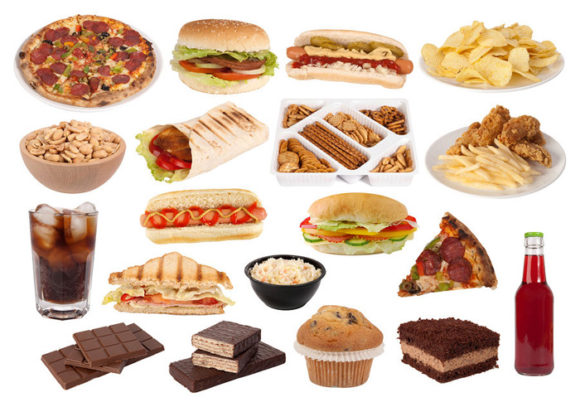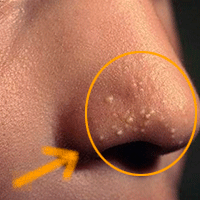Proper nutrition for breastfeeding extremely important. It helps to prevent a lack of milk, as well as to maximize the duration of the breastfeeding period.
Nutrition Vegetable puree When lactating
dried fruit vitamin C Low blood pressure
Diet Calcium Dark Chocolate
Together with milk, the baby receives all the necessary nutrients, and can also avoid dysbacteriosis, intestinal colic, constipation and allergic reactions. IN this case great importance has mother's nutrition while breastfeeding.
Features of the diet of a nursing mother
If the nutrition of a nursing mother during breastfeeding is organized correctly, then occasionally she can afford a prohibited product, if she really wants to, and at the same time not feel like a criminal.

Only healthy food for lactation
Dr. Komarovsky identifies 5 basic principles of nutrition during lactation.
- Danger - it is necessary to completely abandon alcoholic beverages and those products that can cause fermentation in the gastrointestinal tract, and also contain harmful additives (sweeteners, dyes, flavor enhancers). Junk food should be consumed in small doses, and then monitor the reaction of the baby. If the body has not reacted, this product is not allergenic for your crumbs and may well be included in the daily menu.
- Quality - Nutrition during breastfeeding should consist only of fresh, wholesome and healthy foods. It is necessary to completely abandon smoked meats, fast food, carbonated drinks, canned food, semi-finished products.
- Variety - nutrition during lactation should include all the necessary food groups - fish, meat, vegetables, berries, dairy and sour-milk products, eggs, bread, vegetable oil.
- Mode - you need to eat in small portions 5-6 times / day. The optimal time for eating is 30 minutes before feeding the baby.
- Individual features - gradually introducing new foods into the diet, the mother will be able to determine whether they are suitable for her baby. Some children are not uncomfortable with cabbage salad with the addition of cucumber, but an allergy can pour out on a harmless zucchini.
Also find out which ones are put in the hospital.
Mom's nutrition in the first month
The first month after childbirth is considered the most strict in the mother's diet menu. This is because the baby's digestive system and enzymes do not yet know any nutrients other than sterile amniotic fluid.
According to many pediatricians, in the first month, the mother's diet when feeding the baby should be subject to a strict diet, and the products are introduced every day in a certain way. It is this approach that will help protect the baby from colic and food allergic reactions, and also help to function properly. digestive system child.
Mother's nutrition during breastfeeding at 1 month should consist of:
- low-fat fermented milk drinks - yogurt, kefir, yogurt;
- cottage cheese;
- hard cheeses;
- raw seeds;
- boneless beef broth;
- boiled or steamed beef;
- low-fat steamed fish;
- raw fruits and vegetables, excluding cabbage, tomatoes, cucumbers;
- potatoes in "uniform";
- oatmeal;
- beets;
- boiled egg yolks;v
- biscuit cookies;
- berry fruit drinks.v
What to feed a baby at 5-6 months?
If a child up to six months ate exclusively mother's milk and at the same time gained weight and growth perfectly, then it's time to introduce new foods into the diet. Depending on the characteristics of the development of the baby, the recommendations of the pediatrician and your personal preferences, you can introduce vegetable or vegetable products as new products. fruit puree as well as juices.
![]()
vegetable puree for baby
If the baby has a tendency to allergic reactions, then you can first recommend vegetable puree(from half a teaspoon to bring up to 50 grams / day). After 2-3 weeks, you can offer the crumbs another new food.
Nutrition 5 month old baby breastfeeding changes its mode.
- At night, the most active feeding shifts to the last 2-3 hours before rising.
- In the first half of the day, the baby is rarely applied to the breast, as he sucked enough during the night.
- In the evening, applications are more frequent.
- The nutrition of a 6-month-old baby is no longer limited to only mother's milk - he begins to try "adult" food. It only means new stage in the development of the child, and not the lack of milk from the mother.
- The baby tries new tastes, gets used to the peculiarities of food, unlike breast milk.
- The nutrition of a 6-month-old baby who is breastfed may also include vegetables, fruits and cereals recommended for this age.
- The baby can try safe, hypoallergenic food from the table of adults.
What to feed the baby 8-9 months?
In the diet of an 8-month-old breastfed baby, mother's milk should take up no more than 1/3 of the total food volume.
- Vegetable purees can be prepared from vegetables available to you.
- Do not forget to add greens to vegetable puree - parsley, dill, lettuce, but avoid spicy seasonings.
- Closer to the year you can give the child onions.
- Porridges with mother's milk are usually made from buckwheat, oatmeal, rice and semolina. With a little effort, you can cook very tasty barley porridge.
- The nutrition of a 9-month-old child can be varied with fish dishes (low-fat) - cod or hake. However, always carefully remove the bones from the fish.
- You can cook steamed fish cutlets or just boil and mash it.
- Porridge should be boiled in whole milk, without diluting it with water. Cow's milk should be stored in the refrigerator and boiled before drinking.
Let's consider what nutrition should be when breastfeeding a mother by months.
| Month | Allowed | Forbidden |
| 0-1 |
porridge - buckwheat, oatmeal; lean meat - boiled or steamed; · dairy products; fish - cod, hake; berry fruit drinks; eggs - no more than 3 per week; Wholemeal bread; durum pasta; vegetable oil - about 2 tbsp. spoons / day; fresh and boiled vegetables (potatoes, pumpkin, carrots, zucchini, beets); marshmallows and marshmallows - up to 2 times / week. |
· alcoholic drinks; · cabbage; · canned food; homemade seamings; Strong black tea · chocolate; · smoked products; · sausage. |
| 2-6 |
The menu can be supplemented: Lenten borscht; nuts (except peanuts and pistachios); poultry meat; homemade jam · freshly squeezed juices; fresh and dried herbs. |
· alcoholic drinks; peanuts, pistachios; · cabbage; · canned food; homemade seamings; ready-made sauces (mayonnaise, ketchup); Strong black tea Shop juices · chocolate; · smoked products; · sausage. |
| 6-12 |
The diet can be varied with fried delicacies, but fatty foods should also be avoided; stewed, boiled and steamed food remains the basic food; · You can gradually introduce exotic fruits, seafood, chocolate, legumes and garlic. |
Forbidden foods become more likely undesirable - they can not be consumed in large portions and you need to monitor the reaction of the baby. You should refrain from: smoked meats; · sausage; · mayonnaise; · condensed milk; · canned food; · carbonated drinks; · margarine; Fast food · ice cream; Salts. |
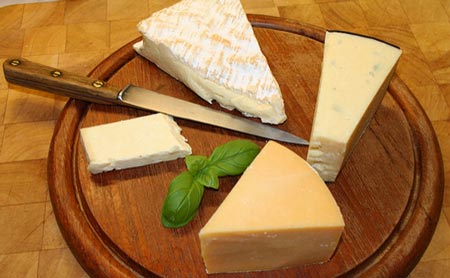
More dairy products
Possible dangers of non-compliance with the diet
If the mother's nutrition during breastfeeding does not correspond to the recommended menu for months, then allergic reactions may occur in the baby. According to experts, 40% of children who consume exclusively breast milk experience short-term manifestations of food allergies, and 10% have more severe degrees of its manifestation.
Nursing mothers need to be more careful in choosing products for their diet, exclude highly allergenic foods - honey, nuts, strawberries, oranges. If a woman has diseases of the gastrointestinal tract, it is necessary to adhere to an even more strict diet, which the doctor will help to make.
Find out why and the whole truth about.
A woman while carrying a child could eat her favorite foods, excluding obviously harmful food. But after the birth of the crumbs, the diet changes dramatically, since the lactation period for the baby has great value. It is from the nutrition of the mother that the well-being of the baby will depend. In the first months, it is especially important to adhere to proper nutrition. But it is worth noting that the diet for nursing mothers is strikingly different from conventional diets. Therefore, you need to know all the subtleties associated with the use of certain products.
What is a diet during breastfeeding, a list of permitted and prohibited foods, we will describe in this article.
Diet when breastfeeding a newborn: what you need to know
The term "diet" has a bad effect on the psyche of women. Any restriction causes resistance. Diet for nursing mothers is compliance proper diet nutrition. That is, the main thing is to cook food in the right way, eat dosed foods (fractional nutrition), do not overdo it with spices, although the diet after childbirth for a nursing mother is quite strict.
Many women are looking for a middle ground, so as not to break the regime and at the same time not harm the child. It is important to say that a feeding diet is not a rejection of food.
During this period, a young mother should eat well, but exclude certain types of foods.
Competent balanced nutrition can be conditionally divided into three periods and depends on the age of the baby:
- From birth to 1.5 months;
- From 1.5 to 6 months;
- From 6 months to the end of the feeding period.
Diet while feeding: general rules
- Food should be satisfying. A woman should consume at least 3,000 calories per day. But excess calories will not indicate nutritional value. breast milk, so you should not overdo it either;
- A complete complex of substances. On the day you need to absorb about 120 g of protein, 500 g of carbohydrates and 100 g of fat. These are adaptive indicators for a nursing mother;
- Vitamin complex. You can’t do without vitamins, so almost all types of vegetables, fruits and herbs are included in the diet. You should also not forget about minerals, because they affect the physical and mental development baby;
- Fractionality. Eating when you want is wrong. It is better to divide the food into three full-fledged meals, in which it is allowed to make small snacks with easily digestible foods;
- Prevention. A woman should initially exclude allergenic food, because it can lead to serious consequences, up to Quincke's edema.
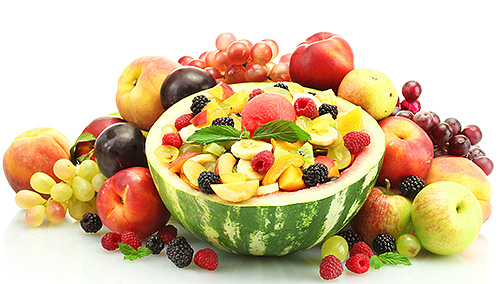
Diet when feeding: prohibited foods
- Allergic foods include: all red and orange berries, fruits and vegetables, radishes, foreign fruits (not typical of our latitudes), chocolate, cocoa, grapes, seafood (shrimp, squid), etc.;
- From drinks it is worth giving up black tea and coffee. Alcohol intake is naturally also excluded;
- It is worth forgetting about salty, spicy food;
- Also harmful to the crumbs: onions, garlic, any kind of canned food;
- When shopping for groceries, avoid foods with preservatives, flavorings, or preservatives. To do this, you need to read the composition in detail.
Nutrition for nursing mothers in the first month
After the birth of a child, a lot of trouble is added, but a woman also suffers deprivation in terms of nutrition, since it is the diet for a nursing mother in the first weeks that is quite tough from the point of view of psychology, because you need to give up your previously favorite foods. Although physically a woman will not feel much discomfort and hunger.
So, what is the diet after childbirth for a nursing mother? Immediately it is worth noting the list of products that in no case should not be eaten:
- Any pastries;
- Fast carbohydrates (cakes, sweets), etc.;
- White bread;
- Peanuts, nuts;
- Legumes, rice;
- Fresh vegetables and exotic fruits;
- Coffee and black tea are excluded from drinks.
What to eat during this period:
- Lean meats (chicken, turkey, rabbit). Fish is also allowed, but dietary;
- boiled vegetables;
- Any fermented milk products (preferably cottage cheese, milk);
- local fruits;
- Pasta from durum wheat, cereals;
- As a drink, you can drink tea with milk.
In fact, the food of a young mother should be light so that the child does not experience colic, diarrhea, or, conversely, constipation. This diet should last until the baby is 1.5 months old. Cooking food from such a set of products is more than easy. It can be light soups on the broth, and vegetable casseroles, various cereal cereals. For dessert, you can buy biscuit (not butter) cookies.

It is worth noting separately that this is a good diet for breastfeeding for weight loss.
Diet while feeding: the second stage
Already from 1.5 months, you can diversify the menu a little by including more high-calorie foods. The baby grows, and as it develops, the need for more nutritious food appears. New products should be introduced gradually. Every week - New Product. Nutrition in the second month includes:
- Lean pork;
- Fish (marine);
- Vegetables and fruits according to the season. You can indulge yourself with watermelon, melon, but you should refrain from grapes, as it can cause bloating in the baby;
- Fruit drinks are useful for both mother and crumbs from black or red currant;
- You can eat boiled pork, but only home cooking(without preservatives).
But from smoked meat, sausages, sausages still need to refrain. From drinks you can drink:
- Kiseli;
- Herbal or green teas;
- Dried fruit compotes.
Nutrition for mother and baby: the third stage
Already from six months, the so-called "rational rest" for mom begins. At 6 months, the baby's gastrointestinal tract begins to work intensively and introducing him to new products is no longer as dangerous as before.
In moderation, you can consume baking, rice, smoked meats, canned food. You can start cooking fried foods, but not fatty foods.
Usually, during this period, mothers begin to give their children the first complementary foods, respectively, life is much easier. Pediatricians recommend using apples, biscuit cookies, and vegetable purees in the daily meal.
breastfeeding diet for weight loss
After childbirth female body undergoes significant changes. The stomach becomes flabby, although with an elementary charge it can be eliminated within six months. But what to do if during the period of pregnancy a woman gained a lot of extra pounds?

The diet for breastfeeding for weight loss should be balanced, since first of all you need to take care of the nutritional value of breast milk, and only then about the figure. But nutritionists have developed a special diet that will help you quickly get in shape. The breastfeeding diet for weight loss includes the following regimen and diet:
- All the food that is described in the diet of young nursing mothers is the same diet, but you need to cook food either steamed or boiled. That is, fried, fatty foods are completely excluded;
- Don't eat 3 hours before bedtime;
- Drink at least 2 liters of water a day;
- Go in for sports. There are a lot of exercises for mothers with a baby: it’s fun for him, and it’s useful for you;
- If you overcome hunger in the evening, kill it with a glass of kefir or yogurt without additives;
- Don't overeat. Many women, seeing the time on the clock, "store" food, but it costs fractional, every 2-3 hours and little by little.
Nutritionists say that if a woman introduces this diet into her daily routine, she will become a habit and such a diet will become a way of life, and not a short-term diet.
Personal care
In the evening, when the baby falls asleep, you can devote time to yourself, especially since the baby sleeps for up to a year every 3 hours (for everyone individually).
Massage the abdomen, thighs, use olive oil for rubbing or baby oil.
Such a massage will improve blood circulation and make the cells of the body regenerate faster.
Diet of a nursing mother by month: table
To make it convenient for a young mother to use the advice, we have created a special table that will help you navigate which foods can be consumed in a given period. The diet of a nursing mother for months is quite convenient, divided into separate segments for ease of use.
March 7, 2011, 12:36
1st month
Can
Until the tenth day:
baked apples bananas;
cereals: oatmeal, rice, buckwheat, corn, wheat, Artek, barley);
lean soup;
fluid intake (green tea, dried fruit compote, spring water, rosehip steam);
fats: butter up to 15g per day, unrefined oils (sunflower, corn, olive).
lean meat.
From the tenth day: add to the diet
fermented milk products (cottage cheese, fermented baked milk, kefir); fish boiled, baked;
eggs;
gray bread, with bran;
pasta in the sky qty;
hard cheeses, mild;
stewed, baked and boiled vegetables (carrots, beets, cauliflower or broccoli, onions, pumpkin, zucchini);
green and dried spices (dill, parsley, bay leaf);
to tea and between the bases. meals: dried fruits (dates, dried apricots, prunes), biscuit cookies, biscuit, charlotte pie, drying (bagels), croutons without raisins, zucchini pancakes (without flour).
It is forbidden
The entire first month:
whole cow's milk store or homemade); meat broth (from any type of meat);
from dried fruits - raisins;
black tea, coffee;
sour cream;
raw vegetables and fruits (except baked apples and bananas);
fresh bakery products from premium flour;
alcohol.
1 – 3 months
Can
Add to diet: borscht, lean, seasoned with tomato juice (pasteurized tomatoes);
raw vegetables and fruits according to the season;
nuts other than pistachios and peanuts;
meat (homemade chicken, rabbit, quail, veal).
make fruit drinks (from blueberries, lingonberries, currants, pitted cherries);
sour cream.
homemade jam: cherry, pitted plum, apple
It is forbidden
from dried fruits - raisins;
Black tea;
alcohol.
3 – 6 months
Can
Add to diet: porridge (barley, millet)
honey
freshly squeezed juices (carrots, pumpkins, apples, beets);
fresh onion
fresh and dried spices:
basil, savory, tarragon, lemon balm, oregano, celery, mint, basil, thyme.
It is forbidden
whole cow's milk (store or homemade); alcohol.
from 6 months
Can add:
Legumes Seafood
Garlic
Pollen.
Can
natural meat (veal, beef, chicken, rabbit, quail meat); cereals (buckwheat, oatmeal, corn, rice, wheat, millet, pearl barley);
beans and legumes (from 6 months);
fish (stewed or boiled);
seafood;
vegetables (stewed, boiled or baked);
pasta in small quantities;
boiled potatoes, baked;
eggs (chicken, and preferably quail);
hard cheeses are not sharp;
fermented milk products - kefir, fermented baked milk, cottage cheese - it is better to do at home;
gray bread, with bran, white, slightly stale or dried;
fruits (according to the season);
green spices (dill, parsley - from birth; celery, mint, savory, basil, oregano, lemon balm, tarragon, thyme - from 3 months);
onions (in soup from birth, fresh - from 3 months), garlic - from 6 months.
nuts other than peanuts and pistachios;
honey (rich in calcium) from 3 months. and flower pollen from 6 months;
drink freshly squeezed juices, combining to suit your taste and mood - carefully enter one at a time no earlier than 3 months;
make fruit drinks and compotes (from blueberries, lingonberries, gooseberries, cherries) from 1 month;
brew tea from branches of fruit and berry trees, as well as from herbs (yarrow, chamomile, linden, horsetail, mint, lemon balm, eucalyptus, nettle, coltsfoot, elderberry, Bogorodskaya grass (thyme), horsetail, succession, calendula - combining no more than 2-3 herbs or one at a time);
rosehip decoction; fruit compote without sugar.
green tea (large-leaf, without additives); weak black
teas for lactation, such as Humama, Hipp;
spring or distilled water infused with dried fruit or silicon pebbles, table min. water (such as Sofia Kievskaya).
Breast milk for a baby should contain a sufficient amount of proteins, fats and carbohydrates. After all, only with him the baby's body can get the microelements and nutrients necessary for development. Nutrition for a nursing mother for months will allow you to fulfill this condition, but at the same time not cause colic, excessive gas formation and a rash. Home recipes should include a variety of products. Among them should be sour-milk desserts, fruits and vegetables, meat and fish. Natural and fresh berries also have a beneficial effect on the body.
Features of the diet with HB
The menu for breastfeeding should be formed based on following products supply:
- During this period, it is allowed to eat rabbit, turkey, cow and chicken. They are obliged to decorate mommy's table every day. The meat will only benefit if it is not fried.
- Dairy products help increase lactation. That is why every day you should eat cheese, cottage cheese and drink fermented baked milk, yogurt, kefir. All these products are allowed to be included in the diet only in the absence of harmful additives. It is best to opt for a homemade dish. You should not additionally eat jam, sugar or honey with sour-milk desserts. These products quite often provoke the formation of gas in the baby.
- Fish without excess fat can diversify the meat menu. You can stop your choice on pike perch, cod and pollock.
- Vegetables are a source of vitamins and minerals. It is allowed to gradually introduce broccoli, pumpkin, turnips, cucumbers and cauliflower. Sunflower oil should not be used to make stew. You can only moisten the dish with a few teaspoons of the unrefined composition before serving.
- Among cereals, you can stop your choice on buckwheat, rice, oatmeal and corn porridge.
- The amount of sweets should be limited. Only occasional pampering is allowed biscuit cookies, marmalade, marshmallow and marshmallow.
- Butter and vegetable oil should also be used in the menu in limited quantities.
- Pasta is useful for the body only in the absence of the egg component.
- Nuts can be eaten in limited quantities two hours after eating. Let's say the walnut version of the plant, almonds and hazelnuts.
- Fruit is a natural substitute for unhealthy sweets. They should only be eaten when in season. Bananas will help. Apples, persimmons, apricots, pomegranates and cherries can only be eaten after peeling. They should not be eaten on an empty stomach. Fruits will be most useful if they are eaten two hours after breakfast.
- A woman should drink enough liquid throughout the day. Tea from thyme and oregano will be useful. You can add a little mint to it. We should not forget about mineral water without gas, fruit drink, compote.
Porridge - a source of vitamins and minerals
How to form a diet for every day?
Nutrition during breastfeeding directly affects the amount and nutritional properties of breast milk. Only with an accurate balance will a child be able to get all the necessary amount of minerals and trace elements. It is also possible to achieve an increase in the volume of milk produced through dishes. A breastfeeding diet should include at least 2500 kcal per day. At the same time, it is important not to eat the same thing, but to try to diversify the daily menu as much as possible. During this period, a woman eats for two, so it is not permissible to introduce restrictions.
Every day you should eat meat or fish products, sour-milk desserts, cottage cheese, hard cheese. Your choice should be made in favor of dishes that contain a large amount of protein. Vegetables and fruits can provide the body with nutrients. Among the bread products, it is best to opt for the whole grain option. Do not forget about the amount of fluid consumed. During the day, you should drink about 2000 milliliters of water.
Features of each period
The list of foods that can be included in the diet is expanding every month. You should be extremely careful, because the formation of the child's body is taking place. For the mother, the strict diet is gradually expanded with new dishes. You should follow the basic rules and do it gradually. Parents should carefully monitor the reaction of the newborn. Fats, proteins and carbohydrates are evenly distributed. Additionally, you should monitor the presence of vitamins, minerals and dietary fiber. The table will help any woman quickly navigate this issue.
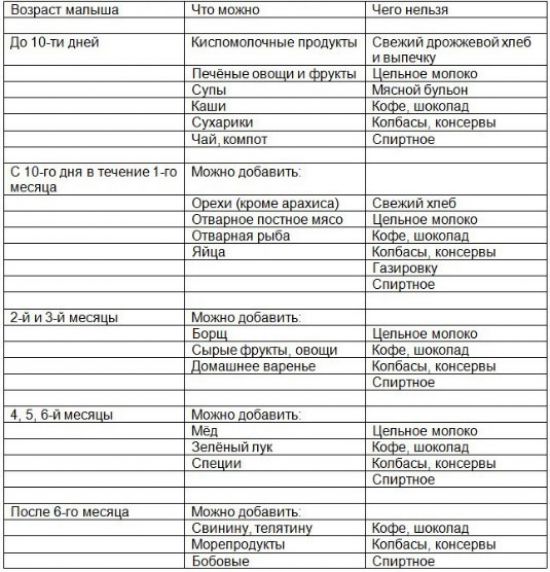
Monthly woman nutrition table
The first month is the most difficult, so mommy should be extremely careful:
- On the 1-2 day, it is allowed to eat a little oatmeal, soup with vegetables, mashed potatoes. From meat dishes, you can afford fish or meat that has been steamed. Vegetables and apples are baked in the oven before eating. From fermented milk products, you can yogurt, cottage cheese and hard cheese, kefir and fermented baked milk. From drinks, you can afford tea or uzvar. General rule for given period- all dishes are stewed or boiled. Nutrition should not put a lot of stress on the gastrointestinal tract.
- In the first week after childbirth, it is allowed to eat porridge with milk and water. Chicken is best boiled or stewed. During this period, you can also afford lean options for rabbit, veal or turkey. Vegetables and some fruits are served exclusively in stew. Do not forget about the daily use of dairy products. herbal teas and compotes will positively affect lactation and increase the volume of milk produced. Small amounts of milk are allowed. It should be understood that for nursing mothers, a strict diet should still be followed. Carbonated drinks, whole milk and yoghurts with preservatives are not allowed. You should also refuse strong tea and coffee. Juices from packages will not bring any benefit.
- From the second week, you can introduce fish that was caught in the sea. It is served baked or boiled. Each new product is tested individually. This is done in order to understand which product the baby is allergic to.
- From the third week, it is allowed to include apricots, currants and gooseberries in your diet. Apples and pears should only be eaten with green-yellow color. Carrots and cucumbers are best grated before use. The range of allowed dishes is expanding due to zucchini, cabbage, dill and river fish. You should still follow the basic rules for introducing the product into the diet. The diet should be varied due to new dishes. Only in this case, the baby will be able to get all the necessary minerals and trace elements. Meat and dairy products are consumed every day. Boiled eggs are only allowed to be eaten once a week.
Features of nutrition every month
The list of allowed products is most conveniently entered in a special diary. New food products should also be indicated there. Thanks to this, a woman will be able to track the reaction of the baby to each of them. The main components of the daily diet: buckwheat, rice and whole grain bread. For baking, you should always choose wholemeal flour. The diet should always contain fermented milk products, which contain a little fat. They should not contain harmful fruits, dyes and sugars.
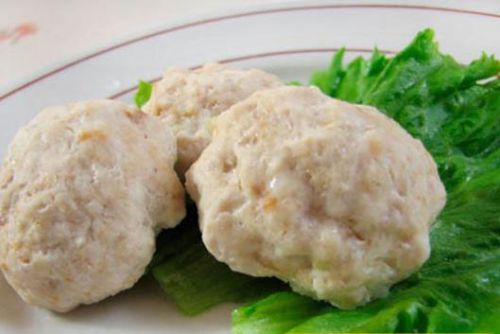
Steamed dishes are useful for breastfeeding
- During the first month, only small amounts of meat are allowed. Otherwise, the load on the baby's liver increases. It is best to replace it completely with fish or poultry. Do not eat sweet, spicy and salty foods. Chips, preservatives and dyes can negatively affect the well-being of the baby.
- From the sixtieth day, barley groats, barley and millet should be gradually introduced into the diet. It is allowed to treat yourself to milk and a small piece of butter. Mommy can make herself beef tongue, pasta and cookies. Jam is allowed only in small quantities. The fruit that the woman intends to eat must be characteristic of that season and range.
- From the ninetieth day, it is already allowed to drink freshly squeezed beet juice. You can add apples, carrots, pumpkins and onions to it. Honey is used only in small quantities.
- After the baby is six months old, you can start eating legumes. Additionally, the diet is enriched with seafood, white bread and fruit juices. In addition, a woman should also introduce complementary foods to her baby. At the same time, you should be aware that an allergic reaction to a product tends to not appear immediately, so it is best to refuse experiments. For example, diathesis may appear only after the second intake of one of the new foods. Parents should check the innovation in several stages.
How to eat right with colic
Food with HB should be completely balanced. A woman should monitor the content of fats, proteins and carbohydrates in each individual dish. Only if all the necessary vitamins and minerals are present, the baby's body will develop correctly. During the day, 2500 kcal should be consumed. Only in this case it will be possible to produce the required amount of milk. In this case, the figure of the mother will not suffer. A woman should drink two liters of fluid per day. It can be green or black tea, mineral water without gas.
If the child has colic, then the mother is advised to stop drinking ready-made juices from the store. Drinks with gas, sweet, salty and fatty foods can also cause a negative reaction in the baby's body. Note that homemade juice should not often be present in the mother's diet. Milk chocolate, beans, cabbage, milk, mushrooms, onions and garlic can lead to excessive gas formation.
All vegetables and fruits are best consumed baked in the oven. It is best to opt for green and yellow color. All allergens are contained in the peel, so you need to get rid of it.
In the presence of colic and gases in the baby, all milk dishes are excluded from the diet for a while. It is allowed to leave only kefir. Later they can be returned to the diet. The process should be carried out in strict sequence and one at a time.
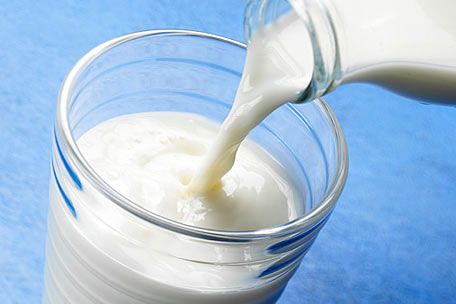
Kefir does not cause colic
How to drink during lactation?
Allowed foods should be consumed in combination with the correct drinking regimen. To do this, a woman should drink about two liters of fluid per day. This rule should not be followed on the first day after birth. During this period, colostrum is produced, which does not require excessive amounts of water. On the first day, you should drink no more than one liter of water. Otherwise, the process of milk extraction may be worsened.
Mom should not drink natural milk. It has a lot of protein, which contributes to an allergic reaction in a small body. It can be drunk only in small quantities or completely eliminated from the diet.
Water without gas, broth, fermented milk products, uzvars and herbal teas positively affect the female body.
What should be discarded during the GV period?
A woman should completely exclude from her diet:
- sweets from the store;
- products that were previously canned;
- coffee and alcohol;
- drinks with gas;
- spicy seasonings;
- sauces with preservatives;
- fried and fatty foods;
- all smoked food;
- fish caviar;
- exotic dishes.

Smoked meats should be completely abandoned
Bitter and spicy dishes can not only lead to heartburn, but also cause allergies in the baby. During this period, you should carefully consider each ingredient. Colic is a common problem that can also occur when you eat too much of a particular food. Often dishes with nuts, citrus fruits, eggs and chocolate cause individual intolerance in the baby.
It is not allowed to conduct experiments on the baby. A woman should always be on the alert. Otherwise, the risk of gas, indigestion and even poisoning increases. Introducing a new product into the diet should start with a small dose. It is not allowed to do this for several foods at the same time. If a child has bloating, then the product must be excluded from the diet. The next attempt is carried out not earlier than in a month.
Every young mother, without exception, wants her baby to grow up healthy and happy. That is why it was and remains one of the most topical issues for any new mother, what should be her diet when breastfeeding.
It is no secret that the mother's nutrition during breastfeeding is one of the factors on which the well-being of the child depends. It is especially important to remember this in the first month after childbirth. At this time, it is quite difficult for a nursing mother to eat right, because she suddenly has a rather large amount of work to which she has not yet had time to adapt. It also makes itself felt the physiological state of the mother after childbirth.
All these factors often bring discord into the diet of a nursing mother, and thus do not allow her to eat properly and balanced.
Why is it so important
The health of the mother, as well as the well-being of her child, depends on proper nutrition during breastfeeding.
In the first 3-4 months of his life, every child requires special attention and worries, because his body adapts to the conditions environment. Many mothers at this time try to take a responsible approach to the issue of their own nutrition in order to help the child avoid such troubles as, for example, intestinal colic, food allergies, constipation, diarrhea, etc.
The first month after childbirth is a rather difficult period for a woman, associated with her well-being. Many are faced with such an unpleasant phenomenon as constipation.
Most often, they are associated with the fact that the intestine, which was previously strongly displaced by the grown uterus, falls into place. This occurs against the background of weakened muscles after pregnancy and childbirth, which causes constipation. Usually everything is restored by itself in the first month or two after childbirth.
Rules for proper nutrition with HB
Proper nutrition helps to significantly alleviate the condition of a nursing mother.

The well-being of the child directly depends on the nutrition of the mother during breastfeeding.
It is especially important to eat right in the first 3-4 months of a baby's life.

What to pay attention to
Sometimes even the most harmless at first glance food can cause certain problems in an infant.
Never forget that every child is different. It is simply impossible to ignore individual intolerance to certain products!
So, the reaction to which popular healthy foods could come as a complete surprise to you?
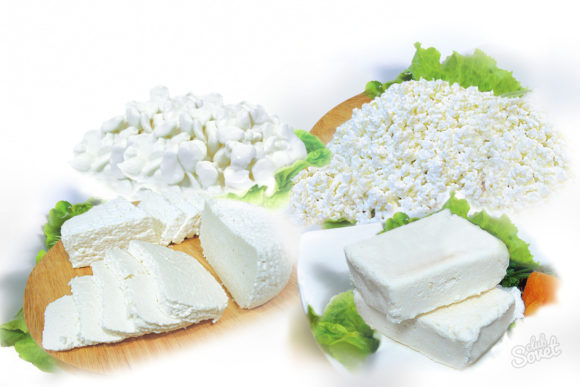
The baby's body is very sensitive to allergenic foods, an allergy can manifest itself already from the use of one cherry.

What sweets can mom eat
At first, sweets in the diet of a nursing mother can cause many problems for the child. However, there are products that are usually well tolerated by the baby and allow you to diversify your mom's menu. This:
- biscuit cookies;
- white marshmallow;
- Turkish delight, pastille;
- condensed milk without palm fat;
- marmalade without dyes;
- curds without dyes and aromatic additives.
What is good for mom and baby to eat
At the time of breastfeeding, the mother should include foods rich in vitamins and beams in her diet.
Although at first it is quite difficult to do this due to restrictions, but as the baby grows, the mother's menu must be gradually expanded and enriched with all sorts of useful things. Try to eat only seasonal fruits, vegetables that grow in your area of residence:
- greens (dill, parsley, green onions);
- fruits, vegetables: beets, carrots, onions, potatoes, stewed cabbage(not earlier than 6 months after childbirth);
- cereals: buckwheat, rice, oatmeal, millet, wheat, barley, etc.;
- white meat: chicken breast, turkey, beef, poultry liver;
- dairy products: milk, cottage cheese, low-fat kefir, yoghurts without fillers;
- egg whites (for the first time after childbirth, no more than two eggs). Over time, boiled eggs, scrambled eggs, etc. can be included in the diet.
What can not eat mom with GV
Alas, at the time of breastfeeding, a woman’s diet should completely exclude or significantly limit such products:
- alcohol;
- chocolate;
- citrus;
- mayonnaise, ketchup;
- carbonated drinks;
- coffee;
- strong tea.
